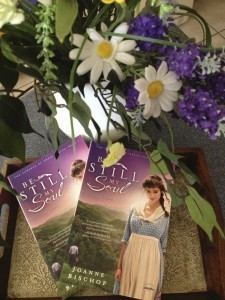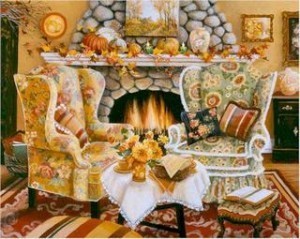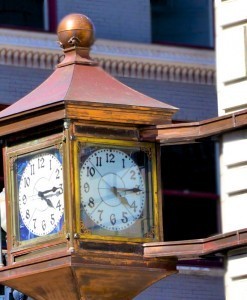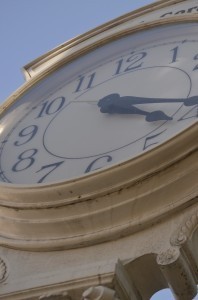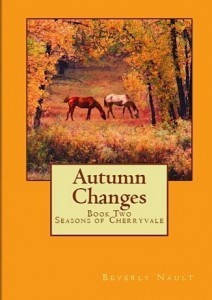Beverly Nault's Blog, page 10
October 29, 2012
Scary Movies – love ‘em or hate ‘em?
Scary Movies – love ‘em or hate ‘em?

(Photo credit Lynn Kelley, WanaCommons)
Like them or leave them, horror movies are enjoyed by countless people across the world. Some people actually enjoy getting scared out of their wits. A good horror movie allows us to experience the fear we wrestle with deep inside without actually being put in danger.
But where did it all start? Who can we thank for first horror movie?
As far as we can tell, the first horror movie was entitled Le Manoir Du Diable aka The Devil’s Castle or The Haunted Castle and is credited to filmmaker Georges Méliés. It was only two minutes long. Being made in 1896, there was no sound, but that didn’t stop audiences from enjoying it. The story features a bat, a cauldron, ghosts, skeletons, an old creaky house, and (thankfully) a crucifix to destroy all that evil.
But, as we know, the horror didn’t stop there. It went on to include some, by now, well known monsters.
The First Monster Movie
Much of classic horror features the monster. From Frankenstein’s monster, to Dracula to the wolfman, a good monster can scare your pants off. If monster movies are your thing, you can look to The Golem as the first. This movie, directed by Paul Wegener in 1915/1920, was based on the same Jewish legend that inspired Mary Shelly to create Frankenstein’s monster. The movie is set in Prague and features a clay man who is brought to life by an amulet-wielding rabbi. The monster’s job is to protect the Jewish ghetto, but it turns on its creators when the job is done.
First Feature Length Vampire Movie
Even though, thanks to Bram Stoker, Dracula is probably the most well known vampire, the first feature length vampire movie was Nosferatu. It was made in 1922 thanks to director F.W. Murnau. The story features a hideous vampire named Count Orlock, a balding vampire that was followed by rats everywhere.
Interestingly enough, copies of the movie were destroyed because Bram Stoker’s widow sued over copyright infringement. It turns out that Nosferatu is a flagrant copy of Stoker’s work, though the name of the vampire and setting of the story were changed.
The First Talking Horror Movie
Of course, no list could be complete without a visit from the first talking horror picture. In 1928, director Roy Del Ruth brought us the Terror, a movie based on Edgar Wallace’s play about a killer in an old house turned inn. Thanks to Vitaphone, audiences could hear the sound effects and the characters speaking for themselves.
The horror film genre has gone through many changes throughout the years. From thrillers to monster movies, the genre has morphed from a two minute silent, black and white film to the full color, full surround sound scare-fests we know today.
So the next time you turn on a horror flick, think about where the genre came from. Then enjoy scaring yourself silly. Just be sure to sleep with the light on.
Sources: http://www.filmsite.org/horrorfilms.html
http://www.horrorfilmhistory.com/index.php?pageID=1930s
http://www.chiff.com/a/horror-movie.htm
http://vitaphone.blogspot.com/2007/10/terrors-real-and-imagined.html
When she’s not scaring up stories about horror movies, M. R. Anglin writes YA fiction with a fantasy twist. In “Lucas, Guardian of Truth,” an eleven year old boy with a vivid imagination must trust a mysterious creature that transports him to Kalaria, a place where nothing is as it seems. There, Lucas learns that he is the Guardian of Truth, destined to save Kalaria from the Mind Master, a creature bent on destroying the planet, and his imagination as well. Visit MR at http://www.lyeland.com
This has been a Coffee Break Escape – 7 Minute Adventures Exploring the World Together. Please visit our authors’ books, businesses or blogs, we’d love to hear from you! If you’d like to be a part of our Coffee Break team, we’re always looking for new adventuristas!
October 19, 2012
Congratulations, and the importance of hard work
Congratulations, and the importance of hard work
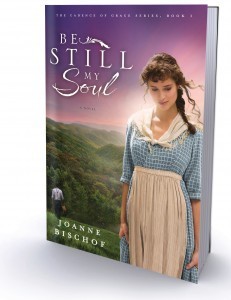
“Bischof kicks off her Cadence of Grace series with a tale of love blossoming in the most daunting circumstances. A gem by an author sure to draw fans.” ~Publishers Weekly
Preparing for the San Diego Writer’s Conference this weekend reminded me of the journey of a book I hold dear to my heart, and whose author I consider even dearer. When we first met, like me, Joanne was just beginning her journey as an author, but was already way ahead since she had been writing and finishing novels since she was in grade school. Which wasn’t really that long in years since Joanne is >ahem< young enough to be my daughter. But I digress.
Aglow and “blooming” in her second pregnancy, Joanne’s joy of writing, love for the Lord, and willingness to listen and offer helpful advice was abundant. I was charmed from that first meeting.
Since then, I’ve witnessed her journey to publication. She shares the challenges, the ups and downs, all with humor and transparency on her blog at Hearfelt Fiction. I highly recommend you subscribe. (She also tells funny stories, shares yummy recipes, and I particularly like how she tells about how she researches and tests a lot of the methods…like soap making…for her historical fiction.)
Like anyone who achieves success in their profession, Joanne’s done everything right; she’s put in looonnng hours. She’s sat at her keyboard for hours (often with a baby in her arms), attended critique groups and conferences, studied the craft, entered contests, listened to those who’ve gone before her with a willingness to learn, all while homeschooling, and always being the greatest friend and encourager one could ask for.
She puts in the hard work. Nothing was handed to Joanne, she’s earned every accolade and five star review.
And she pays it forward. Without being asked, she shares news and announcements from other writers, she retweets, asks how she can help, and offers candid and honest advice.
Because she won the Nancy Bayless award for promising new authors in 2009 at the San Diego Conference we’ll attend this weekend, I consider this Joanne’s writing anniversary of sorts.
Well done, Joanne. You are an inspiration, a gifted and talented writer, a cherished friend, and I know the Lord has mighty plans for your stories that will delight and challenge readers, and other writers like me, for generations.
Beyond that, you are a remarkable child of God, a devoted wife, mother, and daughter, and I am proud to call you my friend.
Now dear reader, run get a copy of Be Still My Soul and curl up with a wonderful story. You will not be able to put it down.
“I just loved Ms. Bischof’s writing style, and her descriptions that took me there. Be Still My Soul is a beautiful, heartfelt tale of forgiveness and starting over, with deep characters and a stunning mountain setting.” Faye, an Amazon reviewer
October 5, 2012
Ellis Island, gateway to a new life
Karen Malena is today’s Adventurista
What was it like for newcomers passing through Ellis Island?
I wondered this, and more, about the brave souls who left the old world to pass through ports of entry like Ellis to begin a new life for themselves.
Did you know you can find the names of the actual ship that carried your loved ones to Ellis Island? I found my great-grandfather’s ship, the Verona, and a sketch of what it had looked like back in the day, along with the names of other passengers who travelled with him.

Ellis Island, circa 1918 (photo courtesy of the Library of Congress)
In the early 1900’s, European immigrants travelled to America seeking new and better opportunities for their families. They would board a huge ship, and those who couldn’t afford to pay the fare for the upper decks were relegated to an area just below the main deck called “steerage,” an area originally designed to be a cargo hold.The conditions were crowded, with hundreds of people crammed into cramped quarters. Nighttime was especially uncomfortable with tiny, closely-packed palettes for beds.
When they arrived at Ellis Island, New York, the poor immigrants were ushered into a processing center which daily herded thousands through for screening. Inspectors questioned them first, and then they were poked and prodded by doctors and nurses looking for diseases or handicaps. This process took about four hours, and then they were free to leave. If they didn’t receive approval, they were sent back to their place of origin.
In the thirty five years of operation, 1892-1954, Ellis processed eight million immigrants. In 1897, a fire destroyed many of the records. 1907 saw the most, when 1,004,756 people passed through the portal. Estimates are that over a hundred million Americans can trace their ancestry through Ellis.
Italian immigrants settled in the Pittsburgh and Philadelphia areas. They worked as carpenters, brick-layers, shoe makers and clothiers. Many found jobs in the newly fabricated steel mills. As soon as they saved enough money for passage, and could arrange for accommodations, their families left behind in the old country joined them, processing through the same ports of entry.
Besides searching the records from Ellis Island, you can type a loved one’s name into the Google search engine. I recently searched for my grandfather’s history and found lots of details our family had forgotten.
Ancestry.com often has free trials so you can get a taste of how easy it is to search. The more information you have, such as spouse’s and children’s names, and where they were born, the more information you’ll turn up.
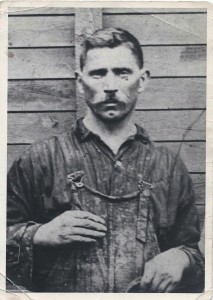
My grandfather Pietro Biancuci, who emigrated from Italy through Ellis Island
While I searched, I noticed that someone had corrected some misspelling of our family’s last name, and had left their email address. I wrote her, and a new friendship was forged. We laughed and cried together over dear loved ones, long gone.
My long lost, now found, relative gave me the name of another site. Family Search lets you search for free.
One of the search engines, Find a Grave, revealed the final resting place of my great-grandfather, Pietro. I found it, and as I stood there, tears coursing down my face over the end of my quest, I gave thanks for being born into a family who had such a strong patriarch, brave enough to leave the old world, pass through Ellis Island, and begin a new life in America.
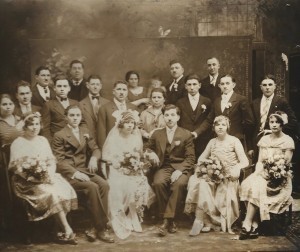
My grandmother’s wedding party, with her father, my great grandfather, Pietro, standing directly behind her. (photograph property of the author)
With the power of the internet, and because of the meticulous records, your search for your ancestors might turn up even more than mine did, and I promise you’ll enjoy the adventure. I’d love to hear about what you turn up.
Norway-Heritage Across the Sea

Karen Malena
When she’s not tracking down distant relatives, Karen Malena works in the dental field, which has given her a compassion and a love of people. A devoted mother, daughter and wife, she hopes to convey the ups and downs of true-to -life situations in her writing. Coming from an Italian family has given her passion, and a love of reading has given her the desire for creativity. Karen is a member of Ligonier Valley Writers, and Pittsburgh East Scribes.
Contact her at scoutfinch15003@yahoo.com. Visit Karen’s Facebook page, and learn more about her books on Amazon and at Goodreads.
 This post is a Coffee Break Escape – 7 Minute Adventures Exploring the World Together To contribute and link to your book, blog or business, email bev@beverlynault.com, or comment below, and find out how to be a part of our team of Adventur-istas.
This post is a Coffee Break Escape – 7 Minute Adventures Exploring the World Together To contribute and link to your book, blog or business, email bev@beverlynault.com, or comment below, and find out how to be a part of our team of Adventur-istas.
October 4, 2012
Pumpkin Chocolate Chip loaf and Zumba arms…huh?
Today I’m hosting my wonderful friend, Lu, who usually blogs over at her yummy, funny, colorful (as in photos, not that Shades of Gray nonsense) and sometimes poetic blog, Mudpuddle. Lu often shares the limelight with Weegie, an adorable Corgi, frequently stirs up something incredibly yummy, and always serves up a chuckle or three.
Subscribe to her blog so you won’t miss any of the fun she cooks up, both in town and on her farm where the Weege and her hubby, The Chief, a gentleman farmer, find all sorts of Texas things to share.
Bev: Tell us what you mean by “Zumba arms,” Lu. The really buff kind…like sleeveless in Seattle…?
Lu: Sadly, I don’t mean Zumba arms like all toned and in shape.
I mean Zumba arms as in sore and barely able to lift them.
And while you could probably care less, I relay this information to explain why there will be no exciting action shots in the step-by-step recipe that follows.
It was all I could do to hold the camera. Much less a spoon or whisk at the same time.
But listen.
Y’all need to go to Zumba with me. It was fun. We did the merengue, the salsa, the samba and mostly the sweat. After the whole treadmill/pork butt debacle of earlier in the week, I completely got through the class without creating any kind of spectacle. So SCORE!
To celebrate, I decided to bake something.
I am nothing if not a puzzle.
And as The Chief (her hubby) would say, “with a few pieces missing.”
But I see absolutely nothing wrong with celebrating my introduction to the spicy, Latin, exercise world with a seasonal baked good.
I think you’ll all agree.
But first, I need to talk about pumpkin.
Bev: Like these Lu?
Lu: No, the real kind, Bev, but these are lovely.
Bev: Thanks!
Lu: As I was saying, I’m not the biggest fan. The taste in baked goods can be too pumpkiny, too pumpkin-ish, and sometimes a little overly pumpkin-esque for my taste.
So, I’m always intrigued when I find an appropriately season-celebrating recipe that has a little twist to it. Like the Pumpkin Cheddar muffins I plan to share with you next week, or today’s
Pumpkin Chocolate Chip Loaf.
From Baked Bakery, Brooklyn, New York
3 ¼ c. flour 1 cup vegetable oil
2 tsp. cinnamon 3 cups sugar
½ tsp. freshly ground nutmeg 4 large eggs
½ tsp. ground allspice 1 tsp. pure vanilla extract
½ ground ginger (optional) 1 ½ cups (12 oz.) semisweet chocolate chips
2 tsp. baking soda
2 tsp. salt
1 ¾ cups (one 15-oz. can) pumpkin puree
Preheat oven to 350. Butter two 9x5x3 inch loaf pans. Dust them with flour, and knock out excess flour.
In a large bowl, whisk together the flour, cinnamon, nutmeg, allspice, ginger, baking soda, and salt.
In another large bowl, whisk together the pumpkin puree and oil until combined. Add the sugar and whisk again. Whisk the eggs into the mixture, one at a time, followed by the vanilla. Add 2/3 cup room-temperature water and whisk until combined. With a rubber spatula, stir in the chocolate chips.
Fold the dry ingredients into the wet. Do not over mix.
Divide the batter between the prepared pans. Gently knock the bottom of the pans against the countertop to even out the batter. Use the spatula to smooth the tops.
Bake in the center of the oven until a toothpick inserted into the center of the loaf comes out clean, 1 hour 15 minutes to 1 hour 30 minutes, rotating pans halfway through the baking time. Transfer the pans to a wire rack and cool for 15 minutes. Invert the loaves onto wire racks and cool completely before serving.
**********************************************************************************Butter the pans, dust with flour. Gather your ingredients. I used Canola oil instead of regular vegetable oil, and vanilla bean paste instead of regular vanilla. Why, you ask? Because it’s what I had…

Whisk the dry ingredients together…
Use your favorite big bowl.
[image error]
Uh. I hadn’t whisked yet here. My arm was hurting.
In another bowl, also a favorite, mix together the pumpkin puree and the oil. Now add the sugar and whisk well. Yick. Kind of Halloweenish, no?
Now add the eggs, one at a time.
[image error]
Whisk until each egg is combined.
Now add the vanilla.
[image error]
Stir well.
Now add 2/3 cups water and the chocolate chips- stir well.
Then dump in the dry ingredients and mix ‘er all up…
Here’s what you get…

Divide the batter evenly into the two baking dishes. Bake in 350 degree oven.
[image error]
Bake for between 1 hour and 15 minutes and 1 hour and 30 minutes, depending on the disposition of your oven…

I may or may not have eaten a piece in celebration – you know, of the Zumba arms and all…

I won’t say either way – one would be an unnecessary confession, and the other a complete lie.
I think you’ll like it.
Have a great weekend, and thanks for having me, Bev!
Lu
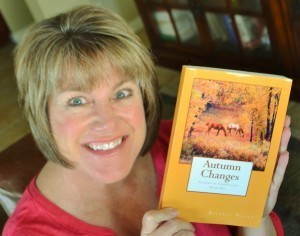
Here’s our guest…wait…what is that book? >grin<
Look at you, holding up Autumn Changes with your Zumba arms! Friendship doesn’t get any better than that. Did I tell you there’s a recipe in the back of it–
Enough about the book, Bev, they get it.
Sorry. Ahem…thanks for stopping by, Lu! Give the Weege a cuddle for me, and I’ll see you in the Mudpuddle!
September 24, 2012
Clocks – not just another pretty face
Why do clocks run that direction? Why are they called hands?
Inventors living in the northern hemisphere were trying to mimic the movement of the sun over a sundial, and the shadows moving across a sundial move that direction in the northern hemisphere.
Noon, or 12 o’clock (of the clock) is at the top because of the sundial tradition. The word noon comes from the Latin word ‘nona’ or ninth, because in Roman times, midday was the ninth hour of the day or la hora nona.
The first timepieces were actually bells set up in the town square to call the public to prayer. Like cloche in French, clock literally means bell.
Soon, dials and indicators were added for a visual display in addition to the audible, but the peasants were illiterate and couldn’t read or do math. They could perform calculations by counting on their fingers. Four slash marks were much easier for them to contend with than “IV” when taking one away from five. That’s why when Roman numerals are used, the IV is traditionally IIII to this day.
O’clock is an abbreviation for “of the clock” or “of the bells.”
Early clocks in the 14th century, had a carving shaped like a hand, and the dial moved around it. Soon, the creators realized the hand could be made to move instead, and in 1690 a minute hand was introduced when the pendulum and anchor escapement were perfected, making precision time keeping possible.
Time hasn’t always been divided the same, at least not in France. During the French Revolution, in 1793, France attempted to introduce a decimal time system with 10 hours in the day, 100 decimal minutes and 100 decimal seconds per minute.
The decimal hour was almost twice as long as the present hour, or 144 minutes. The decimal minute was slightly longer than the present minute at 86 seconds, and the decimal second was slightly shorter…0.86 sec. Clocks were manufactured with both markings, but obviously decimal time didn’t catch on, and France discontinued its mandatory use on April 7, 1795.
A case can be made for daylight saving time being made before Benjamin Franklin. Albert Edward, The Prince of Wales, liked to be outdoors as much as possible, so the clocks all over Sandringham Estate were advanced by half an hour to give him more time for hunting and shooting. King George V maintained this custom during his lifetime, but King Edward VIII abolished it on his accession in 1936.
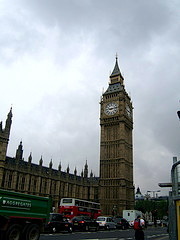
Photo courtesy of Jessie Harrel, WANACOMMONS
Big Ben is actually the name of the bell, not the clock, inside the tower in London. It was recently named Elizabeth Tower, for the Queen in her Diamond Jubilee year, 2012.
Sources:
The Official Website of the British Royal Family
This post is a Coffee Break Escape – 7 Minute Adventures Exploring the World Together

To contribute and link to your book, blog or business, email or comment below, and find out how to be a part of our team of Adventur-istas.
September 18, 2012
Wondering about Wedding Traditions? – a Coffee Break Escape with MR Anglin
Weddings are a blessed time joining a man and a woman together for life. But while marriages have been with us since the beginning of human history, wedding traditions have morphed and changed. Some of the ancient traditions we still practice today have interesting beginnings.
Groomsmen and Bridesmaids
Today, it is customary for a bride to have her closest friends or family as her bridesmaids, and the groom his groomsmen. In fact, the choice of maid of honor or best man can be a source of contention for some families. However, this tradition has changed a bit since ancient times.
The woman’s consent hasn’t always been a requirement for marriage. If a man couldn’t find a woman in his area to marry, he went to the next village to kidnap one. So, the man took one or a group of his friends to help him with the caper. Only the “best man” would be chosen for such an important and dangerous endeavor. Likewise, the groomsmen would protect the groom if the bride’s family came to take her back during the ceremony.
Roman law required a witness, which is how bridesmaids originated. The maid of honor would make sure a wreath was prepared, the precursor to the bouquet, and helped the bride get dressed on the big day. The other bridesmaids would help decorate for the wedding feast, similar to what happens today.
Something Borrowed . . .
“Something old; something new; something borrowed; something blue, and a silver sixpence in her shoe.” This ancient rhyme is repeated as a woman’s wedding day approaches. Each of the objects has a specific meaning that hearkens back to the Victorian Age.
Something old represents a tie to the family, and is traditionally something from the bride’s mother or grandmother. Something new represents a bride’s future happiness. The bride also borrows something—preferably from an older woman who has had a happy marriage—to represent the bride borrowing a little bit of marital happiness for her own union. Blue represents love and fidelity. In ancient Israel, women wore blue ribbons on the border of their dresses for that reason.
As for the sixpence . . . brides put them in their shoe to represent wealth.
Why the Wedding Party Dresses Alike
Groomsmen and bridesmaids often dress alike for the ceremony. That tradition dates back to a time when the groomsmen dressed similarly to the groom, and the bridesmaids to the bride. Why? It was hoped that if evil spirits decided to harm the bride and groom, they would be confused as to who the bride was and who the groom was. It also worked for any human who sought to harm the bride and groom.
It’s fun to know the source of these Western wedding traditions, and watch as new ones are added to the sacred ceremony observed in every culture around the world.
M. R. Anglin writes YA fiction with a fantasy twist. In “Lucas, Guardian of Truth,” an eleven year old boy with a vivid imagination must trust a mysterious creature that transports him to Kalaria, a place where nothing is as it seems. There, Lucas learns that he is the Guardian of Truth, destined to save Kalaria from the Mind Master, a creature bent on destroying the planet, and his imagination as well. Visit MR at http://www.lyeland.com
This has been a Coffee Break Escape – 7 Minute Adventures Exploring the World Together. Please visit our authors’ books, businesses or blogs, we’d love to hear from you! If you’d like to be a part of our Coffee Break team, we’re always looking for new adventuristas!
Sources for the wedding traditions: http://www.theweddinglens.com/blog/why-bridesmaids-groomsmen/
http://www.brideandgroom.com/wedding-articles/wedding-traditions-2.asp
http://www.getwed.com/articles/something-old-something-new-ideas-us-en/
http://www.gagirl.com/wedding/wedding2.html
September 17, 2012
50 Shades of Gracie

When she was six weeks old, she could fit in the palm of your hand. Do not let her diminutive size fool you.
In the spirit of what’s trending, I bring you, the 50 Shades of Gracie. More or less.

After a long day playing, little dogs must be bathed. Ow…sharp teeth!
The first four years flew by. Happy Birthday, Gracie!
Gracie’s got her “sister,” Chloe, the ever-patient Bichon Frise, pinned. (Don’t worry, Chloe can hold her own.)
I will help.
Dog T.V.
Get back in the pool where you belong!
On a warm day, a hot dog enjoys a delicious puppy-pop. (There’s a frozen, homemade pup-sickle in there somewhere.)
Are you kidding me? You call that a golf stroke?
GRACIE!?[image error]
I sorry.
Can I come back inside pretty please?
Somebody needs a hobby.
Ok, I’ve got this!
“This certificate entitles Gracie to all the rights and privileges of an Intelligent Agility Dog.” (Because she needs more rights and privileges…?)
Tired Gracie.  Somebody turn off the lights, a girl needs her beauty sleep.
Somebody turn off the lights, a girl needs her beauty sleep.
And now you know why I call her the tightly-wound mini-pin on springs.
September 12, 2012
AUTUMN CHANGES Book Two in the Seasons of Cherryvale
At long last, the sequel to Fresh Start Summer is here. Thanks for your patience, encouragement, and continued support.
“Along with shorter days and cooler nights, big changes are stirring up Cherryvale. While the trees along the CherryPath exchange summer-green garments to autumn’s crimson and gold, Grace and Maggie scurry to prepare for the town’s annual Harvest Festival, but spar over how to help pop star Tiffany Lane adapt to her new lifestyle and adoptive hometown. A surprise visitor—or two—spice up the town like cinnamon in Grace’s pumpkin walnut muffins just in time for The Scrapbook’s preview opening. The second book in The Seasons of Cherryvale, Autumn Changes continues the stories of the friendly folks and charming small town introduced in the much loved Fresh Start Summer, and Grace & Maggie Across the Pond.”
Will peaceful Cherryvale ever be the same after all the changes blown in on the autumn wind?
Available in paperback from Amazon. Kindle version coming soon.
September 10, 2012
Bonsai – Beautiful glimpses at nature in miniature

Regal, elegant, and attractive bonsai.
Bonsai (pronounced BONE-sigh) is made up of two root words, ‘bon’ meaning tray and ‘sai’ which means plant. Bonsai, or “tree in a pot,” translates the same from both Japanese and Chinese. (Mispronounce it by saying “banzai,” and you’re exclaiming “ten thousand years!”)
Variations of the horticultural art form date back hundreds of years, so long that the actual ancient origins from which it sprouted blur, but everyone agrees the roots are in the Orient.
Other forms of miniature gardening exist, but differ in subtle ways. In tree penjing, a Chinese method, specimens have a wider range of tree shapes, are more “wild-looking,” and are placed in brightly-colored and creatively-shaped pots.
Bonsai are more simplified in shape, more refined in appearance, with larger trunks in proportion to their foliage. They are customarily planted in unobtrusive, low-sided containers with simple lines and muted colors to draw focus to the plant itself.
Enthusiasts agree that bonsai are “enjoyed and practiced by diverse cultures, utilizing the lessons of nature to improve the physical, mental, and spiritual well-being of mankind and our relationship to our environment.” (from Bonsai Clubs International)
Just any old small tree doesn’t qualify as bonsai. The tree, or trees, should exude majesty and elegance. Growers strive for miniaturization, proportion, asymmetry, poignancy, and no trace of the artist, and use wiring, grafting, pruning, clamping and defoliation to achieve their desired result.
Growers prefer woody, deciduous varieties. Shapes vary from formal and informal upright, forests, slant, and rock-based styles, among others.

Forest style bonsai. Up close, it’s hard to tell these trees from their giant cousins.
Tools and pots are important. Pots are usually ceramic, come in a variety of shapes and colors, and may be glazed or unglazed. They have drainage holes for fast-draining soil, allowing excess water, which is crucial to growing healthy specimens, to flow out. Pots usually have vertical sides, so that the tree’s root mass can easily be removed for inspection, pruning, and replanting.

Another view of the forest style.
Tools necessary, besides strong fingertips for the best pruning, include tiny tweezers, saws, wire and cutters, and rakes.

Proper tools for effective Bonsai trimming and care.
Fun Fact from Bonsai Outlet: The oldest living bonsai is over 300 years old, a White Pine affectionately known as the Yamaki Pine, in honor of its donor, Masaru Yamaki. The Yamaki began its life in the 1600s and, despite being less than five miles away from the impact site, it survived the atomic bomb blast at Hiroshima, Japan, in 1945. It is now housed in the US National Arboretum.
Thanks to the San Diego Bonsai Club, where these photos were taken at their exhibition in the San Diego Zoo Safari Park.
National Bonsai and Penjing Museum, located within the U.S. National Arboretum, in Washington, D.C. has the largest, and most valuable exhibition in the United States.
Visit these sites for more information, and to see beautiful photos of this natural art form:
Ruth Morgan’s Beautiful Bonsai Secrets

A pleasing miniature display including bonsai, and various elements, including rocks and pebbles. The tube delivers frequent watering into the pot.
This post is a Coffee Break Escape – 7 Minute Adventures Exploring the World Together

Click on this photo to read more 7 Minute Adventures.
To contribute and link to your book, blog or business, email or comment below, and I’d be thrilled to hear your story idea.
September 6, 2012
Sudoku: Puzzling Numbers, Logic, and an odd name
Where did the international phenomenon, Sudoku—pronounced soo-DOH-koo, really come from, and how did it become such a popular hit? (Don’t make the mistake of calling it sodoku, which is a disease carried by rats!)

Puzzling can help stimulate brain cells according to sharpbrains.com
(photo credit: Sharp Brains)
Each number is a single digit, and when completed, they make up a Latin square, where no two numbers are repeated twice.
The 18th century Swiss mathematician Leonhard Euler developed the concept of “Latin Squares,” where numbers in a grid appear only once, across and up and down. In the late 1970′s, US based Dell Magazines, with the help of independent puzzle maker, Howard Garnes, adapted Euler’s concept with a 9 X 9 square grid. They called it “Number Place.”
Sudoku is actually a logic puzzle, since the squares can be filled in with letters, numbers or shapes.
In the mid-1980s, Maki Kaji, the president of the Japanese puzzle giant, Nikoli, Inc., urged the company to publish a version of the puzzle that became a huge hit in that country. According to the London Observer, Nikoli gave the puzzle its current name.
Sudoku translates to “the digits (su) must be single (doku).”
Nikoli helped refine the puzzle by restricting the number of revealed or given numbers to 30 and having them appear symmetrically. The game became increasingly popular in Japan and started becoming a fixture in daily newspapers and magazines. Almost two decades passed before the game was taken up by “The Times” newspaper in London as a daily puzzle.
The game has spawned books, wooden sets, electronic puzzles, computer games, at least one television show, (a British game show), a card game using 81 card decks, a tribute song that received so many hits and downloads the hosting site had to be taken down, computer apps, competitions, and if you Google Sudoku, you’ll get more than 97 million hits.
Sudoku Trivia: there are about five billion possible Sudoku puzzles. The permutations for correct answers are over six sextillion.
For more information, here are just a few sites:

A Coffee Break Escape 7 Minute Adventure
Beverly Nault avoids anything to do with numbers whenever possible in Southern California, but puzzles over Facebook and Twitter, defying logic in every status update.
Coffee Break is always looking for new “adventuristas” to contribute short, interesting, and fun pieces, so click through to find out how (its free!) to become a team member. Did I mention it’s free?





